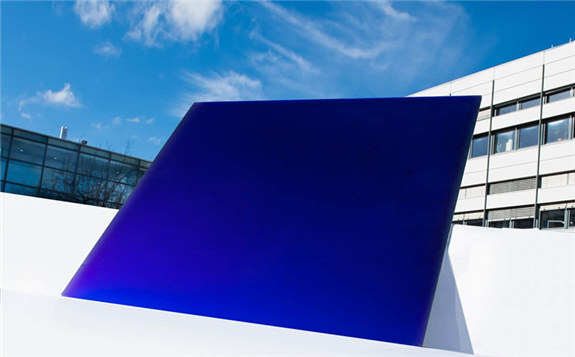In addition to power generation, aesthetic aspects are often relevant when it comes to installing building integrated photovoltaic (BIPV) systems. This is especially true when solar power is generated on the facade of a building.

With this in mind, a group of scientists at the Fraunhofer Institute for Solar Energy Systems ISE has developed a process to enable the production of solar modules with homogeneous surfaces and different colors that could then be integrated “almost invisibly” on facades or roofs.
The researchers based their technique on the surface structure of the wings of the morpho butterfly – a tropical American butterfly species with dazzling iridescent wings, usually with a pronounced blue area. These wings have a micrometer-fine surface structure that specifically reflects a narrow range of wavelengths. The Fraunhofer ISE scientists succeeded in applying a similar surface structure to the back of the cover glass of their solar modules using a vacuum process.
“The sparkling idea for the development was not to color the cover glass of the modules with color pigments, but rather to imitate the physical effect of the butterfly's wing,” said Thomas Kroyer, head of Coating Technology and Systems at Fraunhofer ISE. “If the glass was coated with pigments, the solar modules would lose much of their efficiency, as the light can no longer penetrate the module unhindered.”
The proposed module technology, which the scientists labeled as MorphoColor, relies on an optical effect. Depending on the structure, cover glass can be produced in bright blue, green, or red. “Around 93 percent of the light can penetrate this layer – only around seven percent is reflected and triggers the color effect,” Kroyer went on to say. The cover glass, which is vapor-deposited in a vacuum process, can be laminated to form photovoltaic modules or integrated into a collector for solar heat generation.
Both technologies could be applied to manufacturing with a single production line. In the future, photovoltaic and solar thermal modules could be given the same color and mounted almost invisibly next to each other on roofs or facades. House walls with completely homogeneous facades could also be realized, and could supply electricity and heat at the same time. A specially developed assembly method could also prevent the tile-sized photovoltaic cells being soldered to one another from shimmering through the colored cover glass like a chessboard.
The German researchers are currently producing solar cells in strips, which they glue together so that they overlap a few millimeters to form a larger module. This creates a homogeneous whole without disturbing gaps or visible contact wires. “You can look at our shingled photovoltaic modules with MorphoColor coating from different angles – and still the homogeneous impression remains,” Kroyer concluded.
This article is reproduced at www.pv-magazine.com